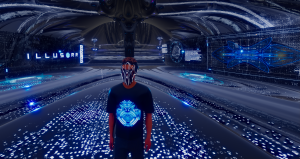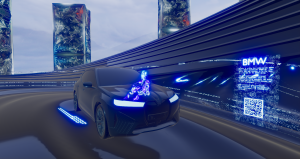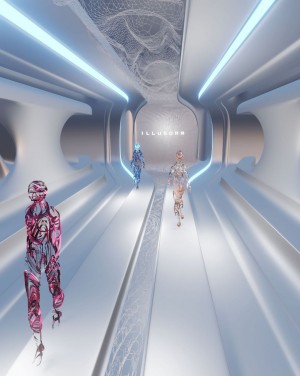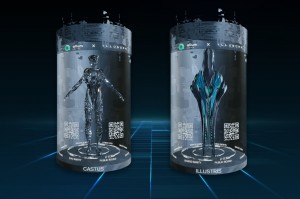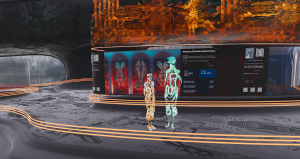Richmond Hill, Ontario Feb 24, 2022 (Issuewire.com) - ILLUSORR is the world’s first meta-architecture and technology company, creating a design-oriented metaverse. ILLUSORR is re-imagining the once fragmented extended reality (XR) industry as an all-in-one platform offering a fully immersive metaverse experience to corporations, creatives, and users. Accessible via PC, VR, AR, Web, Console, Tablet, and Mobile, it offers customizable avatars, verification, social interactivity, home spaces, communities, retail, events, virtual estates, and much more - all using the latest methodologies from the frontiers of architecture and design.
Based in Canada, ILLUSORR has a global team of experts located in 7 different countries, across 4 continents, dedicated to executing the best quality projects. ILLUSORR believes in diversity and connecting through the metaverse. The countries they are currently located in include: Canada, Turkey, Russia, Nigeria, UAE, Bangladesh, and China.
ILLUSORR has worked with clients from across the globe, and a range of different industries, enriching their expertise and areas of interest. They have worked with clients like BMW to unveil their iX concept car in VR, during ILLUSORR’s PYLON Launch event in December 2020. They have also worked with ABB Robotics, one of the largest robotics companies in the world, to create an AI-generated automotive painting using their PixelPaint car painting robot system. On a slightly larger scale, ILLUSORR worked with Hermitage Museum, the largest art museum in the world (100,000 sqm), on their first virtual exhibition exploring the history of NFT projects: Celestial Hermitage. ILLUSORR has created and minted NFTs through their partnership with Alium Swap, and has created a mini-metaverse for Optima called Optiverse. Last but not least, their partnership with Standby produced the world’s first Meta Agency (Standby Me) in order to execute large-scale projects for corporate entities.
The metaverse is a collective, shared virtual space that is created when the physical realm converges with the virtual realm - which includes virtual reality, augmented reality, and the internet. This is a completely new frontier and therefore ILLUSORR is leading the way in creating the methodologies for operating in the metaverse; this includes terminologies and categorizations.
The first category that ILLUSORR is redefining is metahuman, which includes all the virtual characters and avatars that will represent humans in the metaverse. There have traditionally been 2 paths that creators take when developing avatars: the ‘realistic’ approach, and the ‘cartoonish’ approach. The realistic version is currently the standard but it has 2 main problems: it is the industry standard that makes it ubiquitous and brands cannot stand out with any unique approach or branding, also it will never look as real as the physical body (which makes it a fruitless mission). The cartoonish look also has similar problems, but more so that it is geared more towards a younger demographic, for an older demographic or even to be taken seriously as a brand, it might not be an effective way to communicate the brand identity. Another problem with the cartoonish look that is becoming more evident is the variety of exaggerated (cartoonish) personalities/looks/features, this opens up the room for labeling and naming which can potentially be a problem for minority groups, even in the metaverse. ILLUSORR offers an approach that solves all these problems. A futuristic, and artistic approach for the metahuman. Using procedural techniques, a completely new aesthetic can be created as a hybrid. This approach allows the creation of a completely new species of metahumans, never before seen; not cartoonish, and not completely realistic. And as an added benefit they are unique enough to be collectible digital assets and sold as NFTs.
The second category of metaspaces is one of the most important. Architects are experts in organizing social functions within space, and therefore the designing of metaspaces also needs architects to lead that process. Most of the current existing metaspaces are replications of existing physical spaces, with light fixtures, wood panels, structural columns, and other components that are not necessary for the metaverse. ILLUSORR is rethinking everything, down to the very ontology of the metaverse. Designing a new conception of a store for brands, new gallery and exhibition experiences, new concert halls and venues for large gatherings, new auditoriums, new outdoor environments, new teleportation, and navigation interfaces, all of these had to be rethought using first principles, and completely reinvented for a new type of metaverse experience.
Metaassets can range in scale and are very important components of the metaverse; they define the way money can be generated and transacted, and with a brand name this process can be catalyzed. The entire world can be designed from inception to operate as digital assets, and as leading designers in the frontiers of architecture, ILLUSORR plans to use a number of design logics to digitize these parcels of land, including: Truchet patterns, Penrose tiling, L-Systems, Voxels, Conway’s Game of Life / cellular automaton, etc. Metaassets come in all scales and sizes, and can be sold as NFTs, published as AR filters, or via any other media that would promote unique brand identity. More importantly, they are just as valuable as physical products, and soon they may become even more valuable. Value is determined by what others are willing to pay for certain products/services, and people will soon realize that virtual products can be carried and accessed anywhere, and can be used 24/7, as opposed to physical products which have limitations due to weight, size, wear-and-tear, functionality, and numerosity.
The metacities have traditionally been designed as either cartoonish, realistic, or dystopic. ILLUSORR is reimagining this process and composition to better facilitate user experience and company branding and make them seamless very much like social media. And the 2 main features to achieve this are procedural modeling and interactive surfaces/interfaces.
The last category is metaevents and these are the future of social gatherings, as the COVID-19 induced lockdown has proved. Justin Bieber, perhaps one of the biggest and best-selling musicians in the world, recently ventured into the metaverse. He performed in his free concert on November 18, with songs from his Justice album, and shocked the world - both his fans and naysayers alike came out furiously enjoying the concert. A total of 10.7 million people participated in the concert, and he apparently did an amazing job at interacting closely and intimately with them. Lil Nas X had 33 million views total, and this is just the beginning, every social event has been redesigned to occur in the metaverse. Talkshows, fashion shows, exhibitions, parties, launch events can all be hosted as metaavents in a completely interactive arena. These events can be fully customized with company branding, logos, themes, and even links embedded for video streams or direct purchases.
The metaverse is the future. It will be the amalgamation point of the internet, social media, blockchain technology, cryptocurrencies, NFTs, extended realities (VR/AR/MR), and all other similar technologies. Every brand in the future will have no choice but to interact with the metaverse because every user currently accessible via the internet or social media will be on it. The brands that are first to market will have the biggest advantage. Companies can start with digitizing their product or service, and can either choose to create their own mini-metaverse experience, or collaborate with an existing platform to benefit from their environment and audience. That is exactly what ILLUSORR does, as the world’s first meta-architecture and technology company, it offers expertise in creating those products, spaces, and experiences, as well as educating brands on the frontiers of the metaverse. The metaverse will transform human civilization forever, and ILLUSORR is equipped to contribute towards the design of this transition.
Media Contact
Faisal U-K faisaluk@illusorr.com http://illusorr.com
